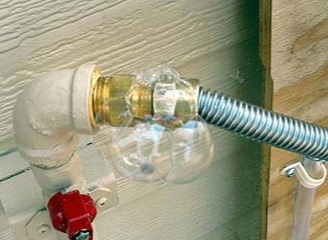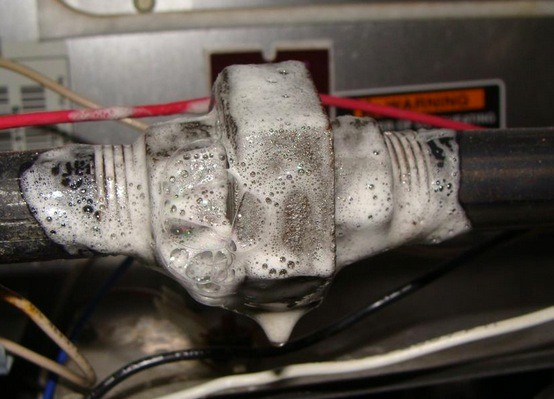"I smell gas when I turn on my oven." or
"I smell gas when I come into the kitchen."
These are both familiar complaints. The first is much more common than the second.
The first is very simple; it always means that an igniter is aging and slow to open the gas valve wide enough. (See my oven manual and "my oven won't bake" ) A small trickle of gas is enough to smell but not enough to light right away. The odor may come and go on different days. Eventually the igniter gets weak enough to cause frequent gas odors and warrants a service call. Replace the igniter!
The second case. A gas odor when the range or oven is not in use is a different situation. An odor may build up gradually in a closed up kitchen. This occurs very rarely and creates immediate concerns of a leak and and impending explosions. In reality our noses are so sensitive that we detect harmless, tiny amounts of gas. Gas appliance designs are so good that it is virtually impossible to have such a bad leak that an explosion is imminent. Plus air currents quickly dilute the gas. If you suspect a dangerous gas leak, immediately open the windows and doors.
Nevertheless, customers get quite hyper when they smell gas. So what can cause a dormant passive leak? Most folks start by assuming a threaded fitting or gas line is leaking. Wrong. The problem is surely a weak seal within a gas valve itself or a seepng gas cock. Both are moving parts and subject to wear. How do you find the leak? Utilities use gas detectors but I am old school and prefer my nose or soap bubbles. Your nose is really the best. As you well know, I am not fond of high tech instruments.
By far the most likely is a seeping gas cock. Get your nose near them and sniff around. Wiggle and turn the valves and see how they feel.

Best Gas Leak Tested
They should be very smooth. A stiff one is suspect. If you wish mix, up some soapy water and paint the gas cock outlet with bubbles. Watch the bubbles and see if they slowly grow over the outlet orifice or around the shaft seal. Similarly paint any suspicious gas fitting with soapy water. Patiently watch for any increase in bubble size.

Second, perform the same test on the outlet orifice of the main gas valve. This is a bit more difficult to do and may require some disassembly. Replace the leaking part. In the unlikely event that neither of these tests prove conclusive, move to the gas flex fittings and any area where someone may have recently worked. Finally check the regulator and all other gas lines. If you are the least bit uncomfortable, call in a plumber.
